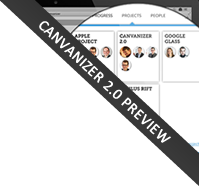UrbanSpire
Key Partners
Community CentersCan help address our safety concerns, and might be a good channel to reach more audiences. Local SchoolsHigh schools / Community College Explanation:To address the safety concerns of our lab usability testing participants, we chose to have classes at the community centers. That way, both the teachers and learners would feel safer with teaching and attending classes. As a result, one of our main partners would be community centers as we use some of their space as locations for classes. |
Key Activities
TeachingPeople can teach to the local community around them LearningPeople can gain cultural knowledge from the people around them Explanation:We also made a significant change to our business model such that anyone can teach/learn. Originally, we designed the application for newcomers to teach a class to locals but we found this idea potentially troublesome as the former group may be too intimidated to teach. |
Value Proposition
Cultural enrichmentBecome more culturally aware; learn cool new things IntegrationMakes a society made of disparate elements more integrated Explanation:As our mission statement states, we want to help people "bring what you know and love to your community". This results in a two-fold value proposition. |
Customer Relationships
Community-BasedCo-creationCo-create value with customers; customers provide content and traffic to our site, and we help them reach a wider audience Explanation:Our app would flourish based on recommendations from participant to other individuals within the community. The nature of our application relies on the trust that community members have for one another and the co-creation value. |
Customer Segments
Culturally Curious IndividualsCultural NewcomersCommunity CentersStudentsMaybe integrate students, idea of citizenship education/knowledge of diversity is crucial in a globalized world. (High school offer extra credit for classes taught/taken) Local Businesses / EstablishmentsBusinesses that place advertisements on our site Explanation:Our customers would include our user base, which are culturally curious individuals and cultural newcomers. We aim to provide them with a service of societal integration and connection, and in return, we are expecting to gain publicity via users telling others. Moreover, these two groups will also provide our website with a wealth of cultural knowledge and regulation (through feedback and reviews) |
|
Key Resources
Community CentersExperts in Cultural SubjectsVolunteers / Advocates in the communityExplanation:We would use the community centers as a resource for both a source of class space and possible participants. This is based off of the idea that community centers serve as an open, welcoming space within a community. |
Channels
Community CenterClasses advertising the website Posted flyersSocial media e.g. Facebook, TwitterEncouraging users to promote the site e.g. competitions? (Local) Celebrity EndorsementsWord of MouthTeachersExplanation:Given we are not on the app store, we would need to take further steps in advertising our application. We do have an advantage with being community focused and based which lends itself to many opportunities of advertisement within the local community. As we partner with community centers, we would look to place advertisements there by supplying the centers with digital content that they could display (posters, flyers, etc.). We would work with the community centers to also place advertisements in any local newspapers, publications, or newsletters. This would be a great avenue to reach many people in the community, as the publications are very often guaranteed to be sent out to its community members (depending on the community of course). |
||||
Cost Structure
DataEngineersExplanation:Since we serve mainly as a platform to connect learners and teachers, our main costs are in building and maintaining the site. |
Revenue Streams
AdvertisementsSplit Revenue on Community Center PassesMany Community centers require residents to get some sort of yearly pass for a small fee. As partners with the community center, when people sign up on our website for a class, they would get a slightly discounted membership card. We would split this revenue with the community center at some percentage. Explanation:For many community centers, they make profit on memberships. To incentivize community members to allow us to use their space, we would advertise community memberships at discounted prices on our websites to encourage those who wouldn't have known about the community centers or bought passes to make the purchase. Because our site is was brought users to this purchase, we would negotiate receipt of a percentage of the profit.If the site gains traction, we also would allow for advertisements on our site. We would approach local businesses and establishments and offer them reasonable prices to advertise on our site to their community. For example, we would guarantee advertisements for local turkish restaurants to users who have taken or searched for turkish classes. |
||||
